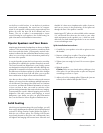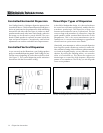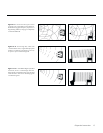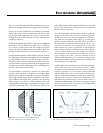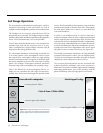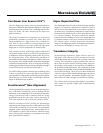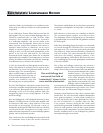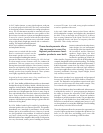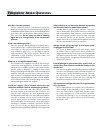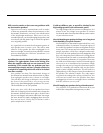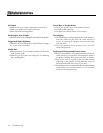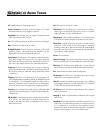
20 Electrostatic Loudspeaker History
In the late 1800s, any loudspeaker was considered exotic.
Today, most of us take the wonders of sound reproduction
for granted.
It was 1880 before Thomas Edison had invented the first
phonograph. This was a horn-loaded diaphragm that was
excited by a playback stylus. In 1898, Sir Oliver Lodge
invented a cone loudspeaker, which he referred to
as a “bellowing telephone”, that was very similar to the
conventional cone loudspeaker drivers that we know
today. However, Lodge had no intention for his device to
reproduce music because in 1898 there was no way to
amplify an electrical signal! As a result, his speaker had
nothing to offer over the acoustical gramophones of the
period. It was not until 1906 that Dr. Lee DeForrest
invented the triode vacuum tube. Before this, an electrical
signal could not be amplified. The loudspeaker, as we know
it today, should have ensued then, but it did not. Amazingly,
it was almost twenty years before this would occur.
In 1921, the electrically cut phonograph record became a
reality. This method of recording was far superior to the
mechanically cut record and possessed almost 30 dB of
dynamic range. The acoustical gramo-
phone couldn’t begin to reproduce all
of the information on this new disc. As
a result, further developments in loud-
speakers were needed to cope with
this amazing new recording medium.
By 1923, Bell Telephone Laboratories made the decision
to develop a complete musical playback system consisting
of an electronic phonograph and a loudspeaker to take
advantage of the new recording medium. Bell Labs
assigned the project to two young engineers, C.W. Rice
and E.W. Kellogg.
Rice and Kellogg had a well equipped laboratory at their
disposal. This lab possessed a vacuum tube amplifier with
an unheard of 200 watts, a large selection of the new
electrically cut phonograph, records and a variety of
loudspeaker prototypes that Bell Labs had been collecting
over
the past decade. Among these were Lodge’s cone, a
speaker
that used compressed air, a corona discharge (plasma)
speaker, and an electrostatic speaker.
After a short time, Rice and Kellogg had narrowed the field
of “contestants” down to the cone and the electrostat.
The outcome would dictate the way that future generations
would refer to loudspeakers as being either “conventional”,
or “exotic”.
Bell Laboratory’s electrostat was something to behold.
This enormous bipolar speaker was as big as a door.
The diaphragm, which was beginning to rot, was made of
a pig intestine that was covered with fine gold leaf to conduct
the audio signal.
When Rice and Kellogg began playing the new electrically
cut records through the electrostat, they were shocked
and impressed. The electrostat performed splendidly.
They had never heard instrumental timbres reproduced
with such realism. This system sounded like real music
rather than the honking, squawking rendition of the
acoustic gramophone. Immediately, they knew they were
on to something big. The acoustic gramophone was destined
to become obsolete.
Due to Rice and Kellogg’s enthusiasm, they devoted a
considerable amount of time researching the electrostatic
design. However, they soon encountered the same difficulties
that even present designers face; planar
speakers require a very large surface
area to reproduce the lower frequencies
of the audio spectrum. Because the
management at Bell Labs considered
large speakers
unacceptable, Rice and
Kellogg’s
work on electrostatics would
never be put to use for a commercial product. Reluctantly, they
advised the Bell
management to go with the cone. For the
next thirty years,
the electrostatic design lay dormant.
During the Great Depression of the 1930s, consumer audio
almost died. The new electrically amplified loudspeaker
never gained acceptance, as most people continued to
use their old Victrola-style acoustic gramophones. Prior to
the end of World War II, consumer audio saw little,
if any, progress. However, during the late 1940s, audio
experienced a great rebirth. Suddenly there was tremendous
interest in audio products, and with that, a great demand
for improved audio components. No sooner had the cone
become established than it was challenged by products
developed during this new rebirth.
ELECTROSTATIC LOUDSPEAKER HISTORY
Rice and Kellogg had
narrowed the field of
“contestants” down to the
cone and the electrostat.




